
This selection of non-listed buildings in Audenshaw represents a larger number of noteworthy buildings.
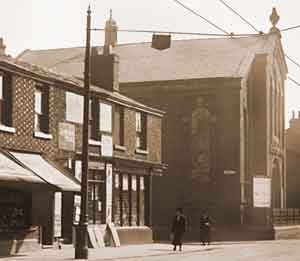
Guide Lane Wesleyan Methodist Chapel, 1920s
This chapel was founded on the Chapel Street corner of Guide Ln, Hooley Hill, in 1807 and it was rebuilt in 1864. The new chapel opened on the 23 Nov 1864 and in 2004 it was closed when it amalgamated with Red Hall Chapel and Audenshaw United Reformed Church to form Trinity Methodist Church accommodated in the Red Hall Chapel on Audenshaw Rd.
The architect for the Guide Lane Chapel was Edward Salomons of Manchester and the contractor was George Thompson of Dukinfield.
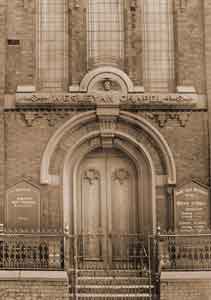
Guide Lane Wesleyan Methodist Chapel, c.1970
The original entrance to the chapel on Guide Lane.
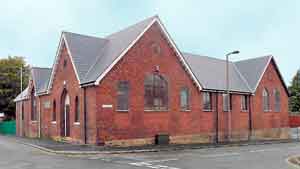
Audenshaw United Reformed Church
This church was founded at Hooley Hill in 1875 as Bridge St United Reformed Church. In 2004 it was closed when it amalgamated with Red Hall Chapel and Guide Lane Wesleyan Methodist Chapel to form Trinity Methodist Church accommodated in the Red Hall Chapel on Audenshaw Rd.
The building is on the corner of Mount Pleasant St and Bridge St and the entrance is on Mount Pleasant St.
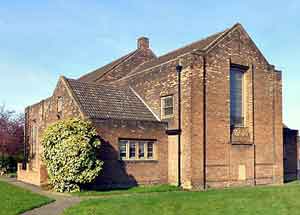
St Hilda's Church
This church is on Denton Rd close to the Audenshaw/Denton boundary. This is the second church on the site as the first, that opened on the 4 Oct 1924, was destroyed by fire in 1936. The first vicar was the Revd E B Clarke (Bradshaw Clarke).
The foundation stone for the second church was laid by the Bishop of Manchester, Guy Warman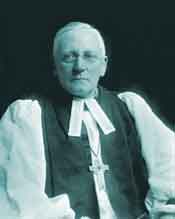 , on the 29 May 1937 and it was consecrated on the 26 Feb 1938.
The architect was Robert Martin (1872-) of Manchester.
, on the 29 May 1937 and it was consecrated on the 26 Feb 1938.
The architect was Robert Martin (1872-) of Manchester.
St Hilda (c.614-680) was the first abbess of Whitby Abbey which was founded by Oswy, King of Northumbria, in c.656. The abbey was the venue for the Synod of Whitby in 664.
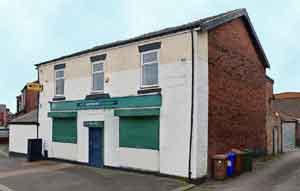
County Constabulary Station
In the 1860s the local Lancashire Constabulary moved into these premises on Denton Rd, Hooley Hill, just inside the boundary with Denton, This remained open until well into the 20th century.
In 1911 Sergeant Herbert Rowbotham was resident here with his wife, Lily Evelyne, and children, Gladys Violet and William.
Eventually it became a grocery store which is now closed.
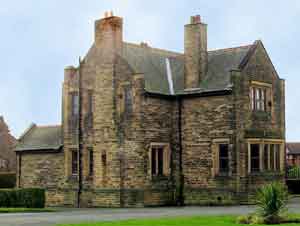
Cemetery Lodge
This lodge is on Cemetery Rd, off Shepley Rd, Hooley Hill, and the cemetery opened in 1905.
The architects for the Cemetery Chapel (no longer extant) were T George & Son of Stamford St, Ashton-under-Lyne, the partners being Thomas and William Henry George. The chapel and lodge were both of stone construction and they were in close proximity. Because of this it is possible that these architects designed the lodge as well as the chapel.
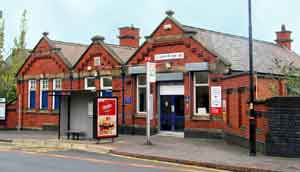
Guide Bridge Railway Station
Although this station is in Ashton-u-Lyne, it has been included here because it is on Guide Ln. It was built by the Sheffield, Ashton-under-Lyne and Manchester Railway Co on its new line between Manchester and Sheffield. It opened as Ashton and Hooley Hill Station on the 11 Nov 1841 when the line was opened to Godley Toll Bar Station. It was renamed Ashton Station in Feb 1842 and lastly it became Guide Bridge Station on the 14 Jul 1845 when the line was opened to Sheffield.
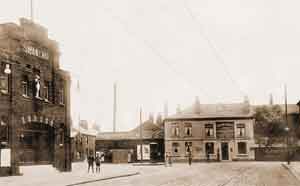
The Stamford Cinema, 1920s
On the left, the cinema fronts Denton Rd, Hooley Hill, and this view is looking towards the junction with Stamford Rd, left, and Guide Ln, right. The Old Packhorse Inn is in the background on Guide Ln.
As built, the cinema had 650 seats and it was operational from the early 1920s until the 1 Jun 1957. Following its closure the façade was rebuilt to make it suitable for commercial purposes. Although much altered, it is now the Audenshaw Co-op convenience store.
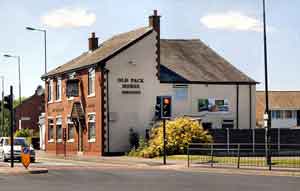
Old Pack Horse Inn
This 19th century public house is on Guide Ln, Hooley Hill. It once stood at the junction of Guide Ln, Stamford Rd and Denton Rd but it has been affected by road re-alignment.
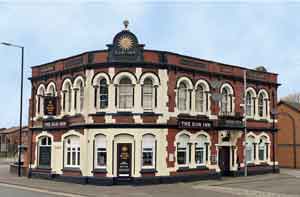
Sun Inn
This public house is on Guide Ln, Hooley Hill. It was re-built in 1890 by Thomas Storer of Pearl St, Denton, and the architect was John Henry Burton of Ashton-under-Lyne.
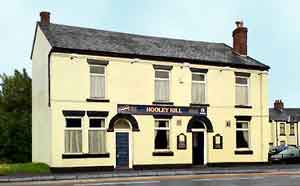
Mechanics Arms
This 19th century former public house is on Guide Ln, Hooley Hill. Its name was changed to Hooley Hill and later it became a convenience store.
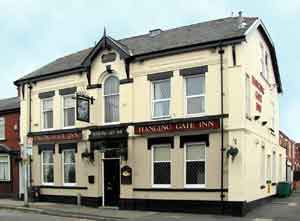
Hanging Gate Inn
This public house, built in 1899, is on Audenshaw Rd on the corner of Greenfield St.
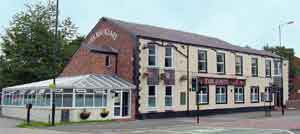
The Boundary
This 19th century public house, formerly the Guide Bridge & Railway Inn, is on Audenshaw Rd at the centre of Guide Bridge. It stands on an historic Parliamentary and Municipal Borough Boundary. As viewed, the left-hand end is in Audenshaw and the right-hand end is in Ashton-under-Lyne.
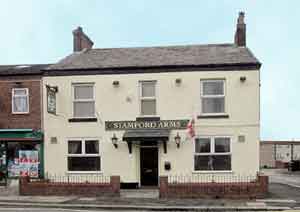
Stamford Arms
This 19th century public house is on Denton Rd on the corner of Stanhope St. The building is still extant but it is no longer a public house.

Snipe Inn, 1920s
This public house is on the north side of Manchester Rd and it is the second building on the site. The inn is a short distance to the east of the junction of Droylsden Rd with Manchester Rd. It stands on the former Manchester & Ashton-under-Lyne Turnpike that was constructed in 1825 (6 Geo. IV Cap. 51) and the Snipe Inn Toll Bar stood across the road beside the inn.
Behind the inn was Audenshaw Racecourse (c.1919-c.1935) used for harness racing (trotting/pacing), greyhound and speedway (dirt track) over the years.
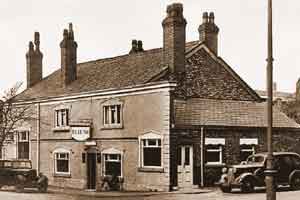
Blue Pig, 1930s
This public house is on Audenshaw Rd opposite Audenshaw Reservoirs. It is the second building on the site, the first, dating from the 18th century, survived into the early 20th century.
It was affected by road re-alignment when the M60 Motorway was constructed and it is now closed and derelict.
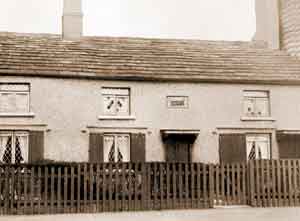
Priory Cottages, c.1945.
Built on Audenshaw Rd in 1793, these were originally three cottages but it is understood that in the late 19th century two of them were converted into one for use as a farmhouse. In c.1914 they were bought by Robert Noblett Jr, the proprietor of Robert Noblett Ltd, tanning and hat leather dressers, for some of his employees.
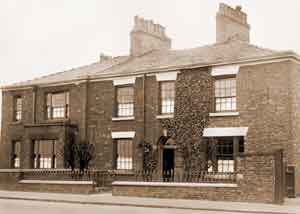
Trafalgar House, c.1900
This house is on Audenshaw Rd and it was converted into an orphanage in 1893/94 by George Henry Ashworth of Audenshaw Lodge, a local mill owner.
It was adapted as an orphanage for the Waifs and Strays Society founed in London by the Revd Edward de Montjoie Rudolf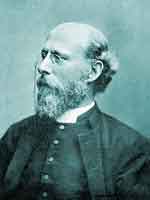 in 1881.
in 1881.
It was officially opened by the Bishop of Manchester, James Moorhouse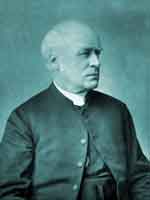 , on the 24 Apr 1894.
In 1897 the building was extended and on the 26 Nov 1897 it was certified to receive orphans from the Board of Guardians.
At the outbreak of the Second World War in 1939 the residents were evacuated to St Monica's Home at Ashbourne, Derbyshire. Ater the war, the home reopened but it finally closed in c.1970.
, on the 24 Apr 1894.
In 1897 the building was extended and on the 26 Nov 1897 it was certified to receive orphans from the Board of Guardians.
At the outbreak of the Second World War in 1939 the residents were evacuated to St Monica's Home at Ashbourne, Derbyshire. Ater the war, the home reopened but it finally closed in c.1970.
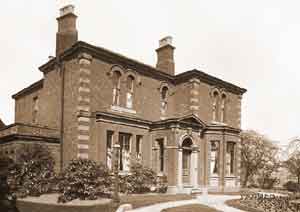
The Mount, early 20th century
This house is on the north side of Shepley Rd, Hooley Hill. In the early years of the 20th century it was the residence of Thomas Thorley, a hat galloon (hat trimmings) manufacturer. It is now a guest house.
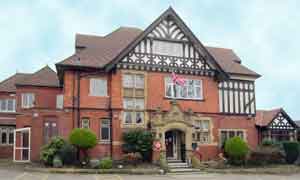
Stanley House
This house is on the south side of Manchester Rd about 300 yards from the boundary with Droylsden. It is now the Stanley House Masonic Hall and Stanley House Function Rooms.
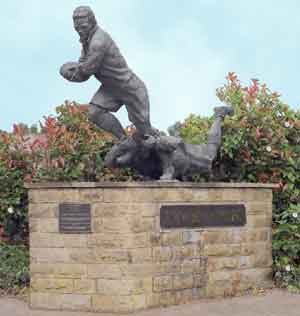
Bronze Statue of Eric Evans MBE
This statue is on the north side of Manchester Rd on the edge of Audenshaw Park and close to the Aldwinians Rugby Union Football Club. The sculptor was Peter Walker and it was made by Castle Fine Art.
Eric Evans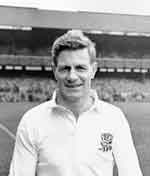 (1 Feb 1921–12 Jan 1991) was born on Edge Ln, Droylsden, and he attended Audenshaw Grammar School.
He first played rugby for the Old Aldwinians Rugby Union Football Club in the late 1930s and afterwards he played for Sale RUFC. He qualified as a sports master at Loughborough College,
later joining Openshaw Technical College in Manchester. He was awarded his first England cap in 1948 and in 1956 he was named England captain at the age of 34, the oldest player to lead England,
and in 1957 he led his country to their first Grand Slam since 1928. At the end of the 1957/8 season he retired from rugby having been capped 30 times.
Under his captaincy England won nine of their thirteen games. He was awarded an MBE for his career in Rugby Union Football and for charitable work for disabled children.
(1 Feb 1921–12 Jan 1991) was born on Edge Ln, Droylsden, and he attended Audenshaw Grammar School.
He first played rugby for the Old Aldwinians Rugby Union Football Club in the late 1930s and afterwards he played for Sale RUFC. He qualified as a sports master at Loughborough College,
later joining Openshaw Technical College in Manchester. He was awarded his first England cap in 1948 and in 1956 he was named England captain at the age of 34, the oldest player to lead England,
and in 1957 he led his country to their first Grand Slam since 1928. At the end of the 1957/8 season he retired from rugby having been capped 30 times.
Under his captaincy England won nine of their thirteen games. He was awarded an MBE for his career in Rugby Union Football and for charitable work for disabled children.